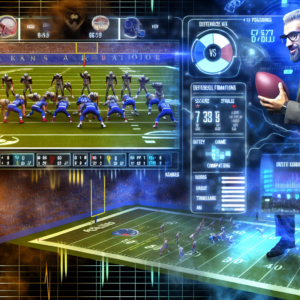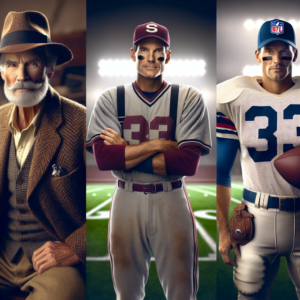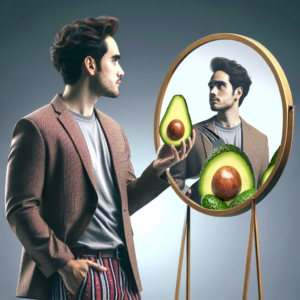
You probably think you are in complete control of your decisions and thoughts. However, how often are they guided by something else? Something you don’t even notice occurring deep within your mind. Here are 21 cognitive mind traps, fallacies, biases, and other phenomena that exist within your brain. Strange things that are hardwired into all human minds. You may go through your entire life or well into adulthood, completely unaware that you are carrying around these thinking errors and mental shortcuts that influence your day-to-day thinking.
You can’t turn them off or delete them from your brain. However, being one of the few people that can notice when they arise in your mind and knowing situations they are likely to act upon your decision making is one of the first steps to becoming a more thoughtful and rational thinker. This 2 part series is mainly inspired by the works of Nobel Prize-winning psychologist Daniel Kahneman and his amazing book “Thinking Fast and Slow.
Mind Trap 1: Cognitive Dissonance
A fox sneaked up to a vine. Firstly, he stared intently at the juicy, purple, overripe grapes. Then, he tried to get at the grapes, but they were too high. Frustrated, he tried again. Consequently, he launched himself upward, but came no closer to the fruit. He leapt for a third time, this time landing hard with a thud. Still no grapes. Afterward, the fox turned up his nose: “I don’t really care. Only grapes that aren’t even ripe. Why would I want sour grapes?” Then, he walked back into the forest. This is one of Aesop’s fables and also where we get the term “Sour grapes” from. The fox had 3 choices: Get to the grapes, admit that he wasn’t smart and/or skilled enough to obtain the grapes, or reinterpret the situation retrospectively.
When we choose option three, and we have two held beliefs that are in conflict with one another, that is an example of cognitive dissonance. If you interview for a job, but someone else gets it, instead of reasoning that the other person was better, you tell yourself that the job was no good anyway, or that the interviewer was unfair.
When people can’t get what they want, they often tell themselves it isn’t what they wanted anyway. You think all rich people are greedy and evil… but you also want to be rich. The dissonance leads to discomfort, mental stress, and anxiety. If the dissonance grows more intense, it can lead to depression. If you notice dissonance, you need to choose one. Because when it comes to cognitive dissonance, as Rolf Dobelli says, “You can play the clever fox all you want, but you’ll never get the grapes that way.”
Mind Trap 2: The Spotlight Effect
You arrive five minutes late to the office, nonetheless, you feel like everyone is judging you. On top of that, it’s your first day at a gym, and you feel like everyone is watching you. Additionally, you spill a small amount of sauce on your shirt, furthermore, you feel so embarrassed because you think the whole party is going to notice!
However, the spotlight effect is the phenomenon in which people tend to believe people are observing them more than they are. People are seldom interested in you and your actions as much as you think. In other words, do yourself a favor, stop overestimating how much people are observing you, and reduce the anxiety that is probably just the result of the spotlight effect.
Mind Trap 3: The Anchoring Effect
Whenever we have to guess something—Let’s say the population of Russia – we use anchors. Starting with something we know for sure to be true, OK so it must be greater than 1, must be less than 7 billion and is less than the population of China… We take these anchors and then we explore the unfamiliar territory. Unfortunately, we use anchors when we don’t need to.
Take a moment to pause and look at these questions: Is the height of the tallest redwood tree more or less than 1,200 feet? What is your best guess about the height of the tallest redwood? If we asked group A these two questions, and group B these two questions… we would consistently get very different answers because of the anchoring effect.
Anchoring Effect
But the anchoring effect doesn’t only apply to numbers that appear informative such as in the tree example. According to Kahneman, “Anchors that are obviously random can be just as effective as potentially informative anchors.” An experiment was conducted on German judges. With an average of 15 years of experience. Each judge was read a description of a woman who had been shoplifting. Then asked to roll a pair of dice. Which were loaded to only add up to 3 or 9. As soon as the dice stopped, they were asked to answer how long they would sentence this woman. The judges who rolled a 9, on average gave her an 8-month sentence. The judges who rolled a 3, on average gave her a 5-month sentence.
The researchers found that the anchoring effect was influencing their judgments. Numerous other studies using arbitrary numbers. Like the last digits of phone numbers or social security numbers also confirmed our anchoring bias.
In sales and negotiations, anchors are being used all the time, and there will be people who are willing and able to set up this mind trap and exploit the anchoring effect against you. The car salesman setting a high price from the start. So the price he actually wants to get from you seems like a good deal. The $150 dress at the front of the store sets the anchor for the $50 dress on sale at the back of the store. Online stores, salary negotiations, and real estate deals are all playgrounds for the anchoring effect. It’s one of our most powerful biases. You can’t turn it off, but you can remind yourself of your vulnerability to it and try to proactively set your own mental anchors before going into any sales or negotiation environment.
Mind Trap 4: The Halo Effect
What do you think about Alan and Ben? Alan is intelligent, industrious, impulsive, critical, stubborn, envious. Ben is envious, stubborn, critical, impulsive, industrious, intelligent. Although the traits mentioned are exactly the same, our perceptions differ. When it comes to the halo effect, sequence matters. More weight is given to the first piece of information we receive. The first piece of information helps us quickly create a story of the person or situation in our minds. Sure, Alan is stubborn and envious, but that is because he is intelligent and wants to win in business. Yes, Ben is intelligent, but he uses that intelligence in envious ways. The halo effect occurs when a single, initial aspect of a person or thing determines and affects or “outshines” how we see the full picture.
Bernie Madoff was the darling of Wall Street
When you first start dating someone, both parties in the relationship are on their best behavior. You start to develop a halo of positive thoughts around this person. Small traits you dislike might begin to pop up, but often go unnoticed because “the halo,” the positive emotions, and the initial information you gathered on this person is blinding out any of the negatives. The honeymoon phase of a relationship is often when the halo effect influences your judgment the most. If we learn that someone graduated from a prestigious university, the halo effect will distort all other traits we attribute to that person without any evidence. Bernie Madoff was the darling of Wall Street, a legendary investor.
Biggest Ponzi-Scheme
The amazing returns and reputation of his company were the halo that made people also conclude his company must be trustworthy. The halo outshone the numbers that made no sense and the underlying fact he was running the biggest Ponzi-Scheme in history. Numerous studies have shown that attractive people are automatically perceived as nicer, more honest, and more intelligent. The halo effect can also be found in schools. If a student answers 2 essay questions and the teacher gives the first essay a high grade, they are prone to subconsciously give that more weight and give the second essay a higher grade also, and vice versa for low grades.
Thinking Fast and Slow
In the work environment, the standard practice of most meetings is to have open discussions on a topic. Daniel Kahneman in the book “Thinking Fast and Slow” argues that it is better to gather independent judgments on the topic from everyone in the group before the issue is discussed because far too often the opinions of the first people to talk are given too much weight and influence the group’s input, especially if the boss speaks first.
First impressions last
Modern research suggests that the old saying “First impressions last” turns out to be true. After meeting someone for the first time, our judgment of that person can influence us for a long time into the future. We jump to conclusions, and our perception of true characteristics is distorted by the halo effect. To combat this, try to move beyond the first appearance of someone or something and decorrelate error. Remember, your brain is trying to help you by making the most complete story it can on the limited information it is provided. The problem is that these “mental shortcut stories” we tell ourselves about a person or thing are often inaccurate from reality.
Mind Trap 5: Gambler’s Fallacy
Three times, a coin is flipped and lands on heads each time. However, let’s say that someone forces you to wager thousands of dollars of your own money on the next toss. Would you bet on heads or tails? If you think like most people, you will almost always choose tails, even though heads is equally likely. But why? We believe in some kind of balancing force in the Universe. If, we asked people to choose which sequence is more probable, most would pick the top sequence. Nevertheless, both sequences are equally probable. We generally underestimate the likelihood of streaks occurring by chance. We are led to believe that something needs to change due to the gambler’s fallacy. Nonetheless, there is no such balancing force. The coin cannot remember that heads was flipped 3 times in a row. The ball cannot remember that it just landed on black.
Awkward answered 5 C’s
Casinos love the gambler’s fallacy because it creates the illusion in the gambler’s mind that they can predict where “the balance” of the dice or roulette wheel will go next. This fallacy can apply anywhere there is a sequence of decisions. That awkward feeling you get when you’ve answered 5 C’s in a row of a multiple-choice exam is this fallacy at work. A University of Chicago review found Asylum judges were 19% less likely to approve an asylum seeker if they had just approved the previous two.
Likewise, the same person applying for a loan was more likely to get approved for a loan. If the previous two applicants were rejected and was more likely to be rejected if the previous two applications were approved. Similar to this, similar findings were also found with baseball umpires. In the same way, take a closer look at the independent and interdependent events around you. Independent events are not influenced by balancing forces of nature.
Mind Trap 6: The Contrast Effect
If you see some leather seats for $3,000, they may seem a little expensive. If, on the other hand, you are buying an $80,000 car, the $3,000 leather seat upgrade seems almost like nothing.
Research shows that people will walk an extra 10 minutes if it means saving $10 on food. However, nearly all wouldn’t walk ten minutes to save $10 on a $1,000 suit.
It’s easy to think something is attractive, large, or expensive when it sits next to something ugly, small, or cheap. Absolute judgments can be difficult to make. The contrast effect takes advantage of your perceptions. This is often used in marketing. The tactics used here are to show a product next to a more expensive competitor and watch as sales rise, show a product next to a less attractive counterpart and watch as you buy more.
A study at MIT set up an experiment. Three buckets sat next to each other, with a large one on the left, a medium one in the middle, and a small one on the right. The participants in the study were asked to estimate the amount of beans in each of the three containers. It was 100, 200, and 300, but that isn’t relevant. What is relevant is that the bean sizes are perceived to be more equal than the actual size. A longer time was needed to sort the beans if they weren’t perceived as almost the same. The same beans just looked different because they were in different sizes. This is also another version of the contrast effect.
Movie Sequel Contrast Effect
The last time you looked at someone attractive in the company of your significant other, that person seemed even more attractive compared to them next to. In the work environment, applicants look even better when the person before them was terrible. Schools that are extremely selective look even more attractive next to less selective schools.
Movie sequels that are not as good as the first movie. The first movie was just OK, but next to a terrible movie, the first movie looks like an Oscar winner. The contrast effect has been taken advantage of for years, in books, movies, music, commercials, and in virtually all forms of entertainment. Be careful of the contrast effect.
Mind Trap 7: Survivorship Bias
After World War II, a study was conducted to look at the most damaged parts of returning warplanes. To see where they should put the armor. Furthermore, each returning plane had all the bullet holes plotted to see where they should put the armor. However, when the study was complete, they noticed something. Planes that were badly damaged didn’t get shot down. This is an example of survivorship bias, which is a cognitive error. In contrast, survivorship bias happens when we concentrate on the people or things that “survived” some process. And unintentionally disregard those that didn’t because they aren’t around to tell us their story. On the other hand, we can’t see the planes that were shot down because they don’t return.
Successful People are Pessimistic
In addition, for a more common example, think about reading interviews of successful entrepreneurs and trying to follow their exact path to be successful. At the same time, what about all the entrepreneurs that did exactly as the people you just read about, but failed? They aren’t getting interviewed, and their voices aren’t heard. But they might make up 99% of entrepreneurs who follow that route. Consequently, successful people are interviewed because they stand out. They are the surviving aircraft. Moreover, college is marketed as the bridge to success, and we see all the notable dropouts who are billionaires and think we could be the next one. We don’t read about the thousands who dropped out and never made it. In the same vein, you see plenty of advice about the importance of being positive, but hardly anyone writes about the fact that a lot of successful people are pessimistic.
Result of Being Pessimistic
As a result, when making decisions, you have to evaluate the situation from a neutral standpoint, which is something very difficult to do. You should ask yourself this, “When we aren’t trying to be positive, do we have the same chance of success?” Successful people have the same chances of success when they weren’t trying to be positive. Nevertheless, many more people tried to be positive and never made it. On the other hand, a blog, as a business, is one of the lowest success rates around and it’s because survivorship bias is abundant.
Mind Trap 8: The Curse of Knowledge
Imagine, for a moment, that you have a family member or a friend who is incredibly smart. They talk using the latest scientific terms and words you can’t even pronounce. When you are around them, you feel kind of reckless. However, as soon as you explain something to them in your own words, you realize that they don’t understand it. At least, they don’t understand it as well as you do. The author of the book ‘Made to Stick,’ Chip Heath and Dan Heath, call this the curse of knowledge. It happens when you assume that others know the things you do. When you have information, it is hard to imagine that someone else doesn’t know what you know.
Furthermore, the more you know, the less you think about how the other person doesn’t know what you know. Because it is difficult to imagine what it’s like to lack that knowledge. The curse of knowledge often happens in the workplace. If you are training a new employee, you might use terms that they aren’t familiar with. Consequently, when they aren’t catching on, you think they are not trying or that they are reckless. But in reality, you are likely the one who is lacking proper training techniques.
So, try to remember that if you are trying to teach someone. Something new or are in an argument and they aren’t getting what you are saying. Instead of calling them foolish or slow, try to change the way you explain things.
Mind Trap 9: Post-Purchase Rationalization
Post-purchase rationalization, or buyer’s Stockholm Syndrome, is the tendency for people to convince themselves that a purchase was a good value. For instance, if you spent a ton of money on something and it’s really bad, you will find reasons to justify your purchase. Similarly, if you have been in a bad relationship with someone and everyone around you is telling you to get out, you are more likely to convince yourself to stay in that relationship to the detriment of your emotional well-being. In essence, this is post-purchase rationalization, and it is more common than you think. Many people will have the same meal every single day just because they already bought it, and they don’t want to be wasteful. Moreover, people hang on to stocks that are plummeting in value just because they already invested so much into it.
On the other hand, the pride of choice takes hold of our actions when we have invested a lot of time and energy into a choice. Instead of admitting the choice was wrong, we spend more time and energy into making the choice right. Additionally, buyers often hold their own value above a product, and if a product is bad, the purchase often makes the person look bad. Likewise, many times people have a difficult time separating themselves from their choices, and the choice is a direct representation of their identity.
You can find examples of post-purchase rationalization everywhere: relationships, investing, career choices, and much more. In light of this, you must be open to be able to make new decisions when the old decisions are not panning out.
Mind Trap 10: Functional Fixedness
What would you do if you were handed a candle, a book of matches, and a box of thumbtacks and were asked to attach the lit candle to a corkboard in a way that the candle can burn normally without wax dripping on the table? This was the question given to one group in a study. The other group was simply asked to attach the candle to a corkboard so it can burn normally. Only 23% of the first group could figure out the problem while 88% of the second group could.
The first group was given the tacks and the candle in a box, but to make the candle stay on the board, they needed to realize that the box was not simply a container, but could also be used as a platform. On the contrary, the box wasn’t simply a storage container, but it was the solution.
This study shows that most people are fixed in the idea.
Mind Fact 11: The Einstellung Effect
The Einstellung effect is a cognitive phenomenon that occurs when an individual uses a familiar, previously learned approach to problem-solving. However, even though the current problem could be better solved by using a different approach, they may persist in their initial methods. Notwithstanding the potential for more effective solutions, people often resort to their established problem-solving strategies. The term “Einstellung” comes from the German word for mindset. In addition, this effect often leads to suboptimal solutions because people rely on their established problem-solving methods and may not consider alternative, more effective strategies. For instance, it can be a significant obstacle in creativity and innovation.
Mind Fact 12: Anchoring
Anchoring is a cognitive bias where individuals rely too heavily on the first piece of information they receive when making decisions. Consequently, this initial information, or “anchor,” has a disproportionate influence on their judgments or subsequent choices. For instance, if you’re buying a used car, and the seller starts with a high price, you may feel that the car is worth more than it actually is; this initial anchor affects your negotiating position. Nevertheless, recognizing anchoring can help you make more rational decisions by consciously considering other relevant information
Mind Fact 13: The Baader-Meinhof Phenomenon
The Baader-Meinhof Phenomenon, also known as the frequency illusion, is the experience of suddenly noticing something more frequently shortly after learning or hearing about it for the first time. Consequently, it’s a type of cognitive bias, and it occurs because your brain becomes more attuned to that particular thing. For example, if you just bought a new car, you may suddenly notice that same make and model more often on the road. This is not because the frequency of that car increased; it’s because your awareness of it has.
Mind Fact 14: The Dunning-Kruger Effect
The Dunning-Kruger Effect is a cognitive bias. Not only do individuals with low ability at a task overestimate their ability, but also people who are less competent tend to overestimate their competence. Consequently, those who are highly competent may underestimate themselves.
This bias is related to the concept that people with limited knowledge in a subject may lack the ability to recognize their own incompetence. In other words, it’s often illustrated by the phrase “a little knowledge is a dangerous thing.
Mind Fact 15: The False Consensus Effect
The False Consensus Effect, for example, is a cognitive bias where individuals tend to overestimate the extent to which their own opinions, beliefs, preferences, or habits are normal or typical.
In other words, people often assume that more people think or act like them than is the case.
Furthermore, this bias can lead to misunderstandings, miscommunication, and even conflict when individuals believe that their views are widely shared, even when they are in the minority.
Mind Fact 16: The Sunk Cost Fallacy
The Sunk Cost Fallacy is a cognitive bias where individuals continue to invest in a decision or endeavor based on the resources they have already put into it (such as time, money, or effort) rather than assessing the current situation’s merits. Consequently, this leads to irrational decision-making because individuals may persist with a poor choice just to avoid losing what they’ve already committed. Therefore, it’s important to recognize this bias and make decisions based on future costs and benefits rather than past investments.
Mind Fact 17: The Availability Heuristic
The Availability Heuristic is a mental shortcut that individuals use when they make judgments about the probability of events based on how easily examples of those events come to mind. In other words, on the one hand, if you can think of an example of an event easily, you’re more likely to believe that event is common or probable. On the other hand, the ease of recalling examples doesn’t necessarily correlate with the actual likelihood of the event occurring. This bias can lead to incorrect judgments and perceptions.
Mind Fact 18: The Illusion of Control
The Illusion of Control is a cognitive bias; individuals often overestimate their ability to control or influence outcomes that are, in reality, determined by chance or external factors. Not only do people frequently believe they have more control or influence over events than they actually do, but this bias can lead to overconfidence and poor decision-making, especially in situations where luck plays a significant role.
Mind Fact 19: The Dunning-Kruger Effect
The Dunning-Kruger Effect is a cognitive bias where individuals with low ability at a particular task tend to overestimate their ability. On the one hand, this phenomenon occurs because individuals who are not competent at a task often lack the knowledge and skills to accurately assess their performance. Conversely, highly skilled individuals may underestimate their competence. On the other hand, those with more expertise recognize their limitations and may underrate their abilities.
Mind Fact 20: The Curse of Knowledge
The Curse of Knowledge is a cognitive bias; consequently, individuals who possess more knowledge or expertise in a particular subject have difficulty understanding or communicating with those who have less knowledge. Additionally, it can be challenging for experts to simplify their explanations or put themselves in the shoes of someone with less knowledge. Furthermore, this can lead to misunderstandings and ineffective communication. Learn more about diabetes control in our article “Diabetes Control the Best Natural Way: A Public Health Priority“
Mind Fact 21: The Self-Serving Bias
The Self-Serving Bias is a cognitive bias where individuals attribute their successes to their own abilities and efforts but attribute their failures to external factors or bad luck. Additionally, people often take credit for positive outcomes and shift blame for negative outcomes. In contrast, this bias helps protect self-esteem but can lead to distorted perceptions of one’s abilities and the causes of events. For instance, individuals may readily acknowledge their achievements, claiming responsibility for their accomplishments, while simultaneously deflecting accountability when things go awry, attributing failures to external circumstances or mere chance. This cognitive bias sheds light on the complex interplay between self-esteem, personal perceptions, and the assessment of causal factors in the outcomes of one’s endeavors.








ut sequi nam dolorem et molestiae temporibus facere mollitia delectus ipsum. omnis quia magni quam ullam ullam assumenda temporibus labore ab aut non. error voluptatem voluptatem pariatur pariatur vit
veritatis facilis enim et fuga illo ea amet inventore aut tempora. voluptates reiciendis officia minus dolore blanditiis eveniet quo non et distinctio est aut nisi. est est sit porro dignissimos repel
aut et corrupti quas animi autem mollitia molestias in necessitatibus corporis sit voluptatem autem. magnam ipsum cum earum quidem eum similique quae qui minus delectus deleniti possimus fugit magnam